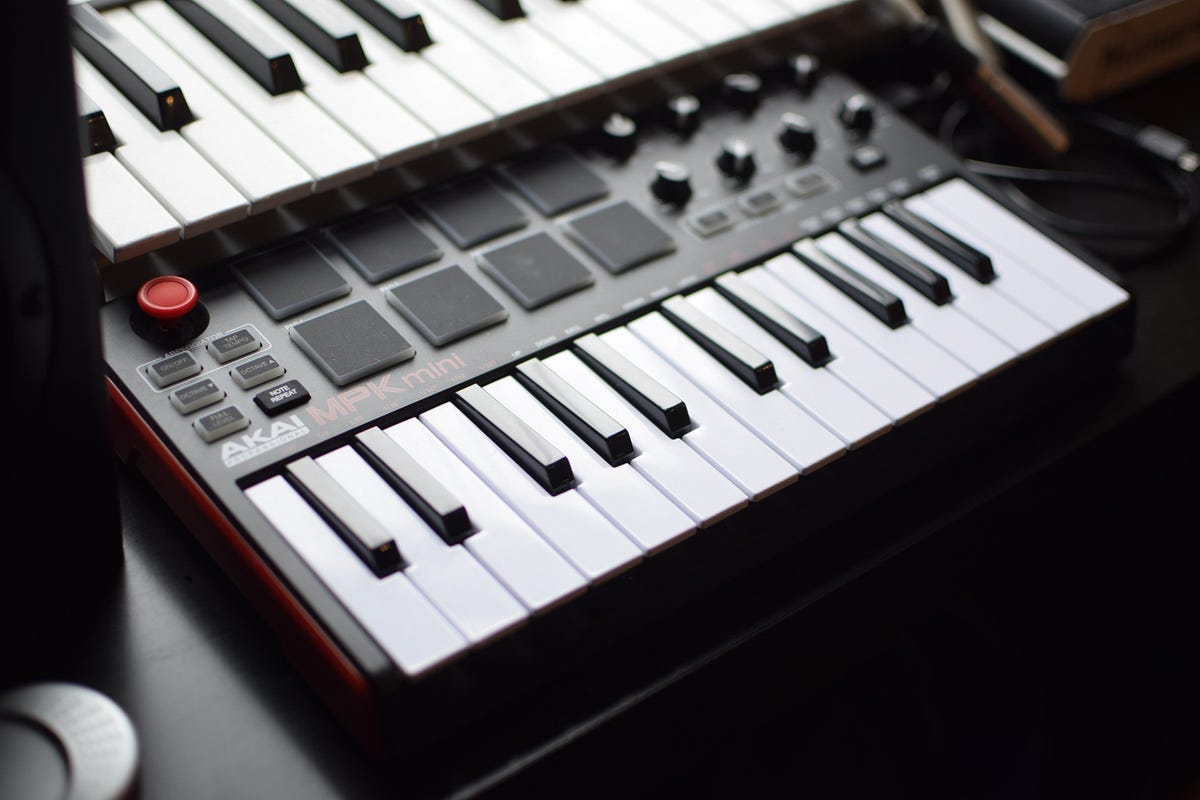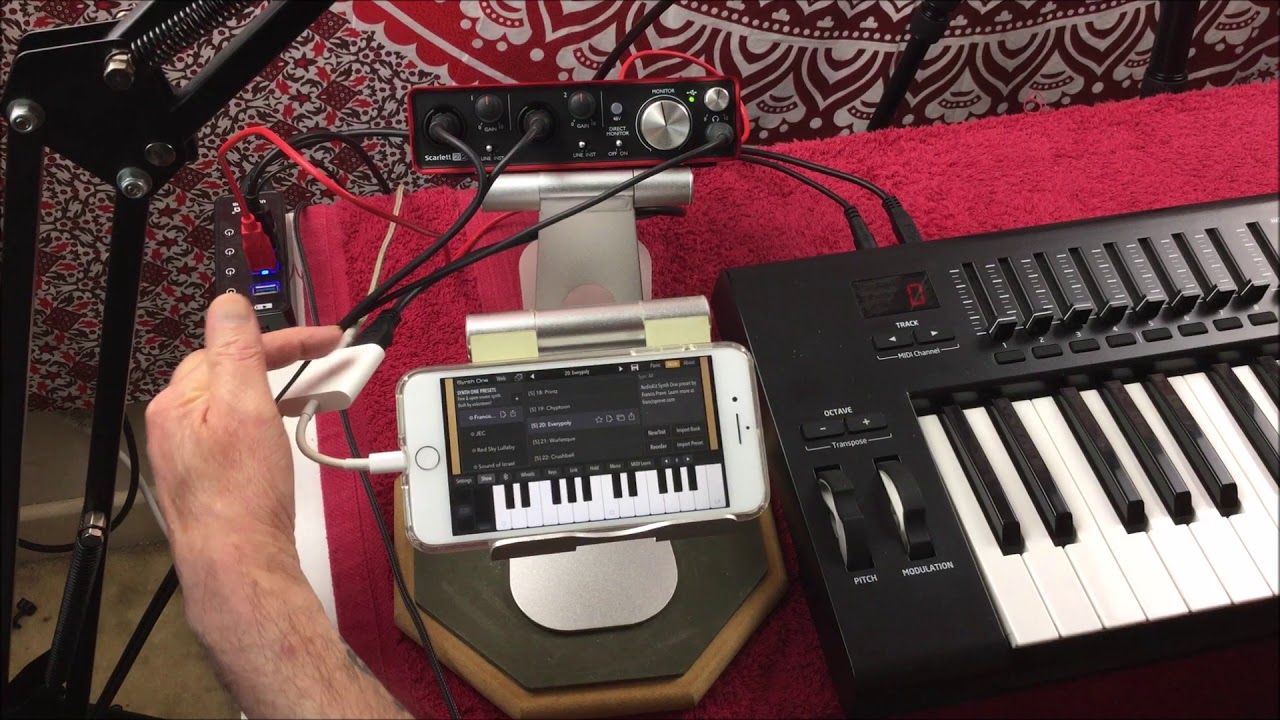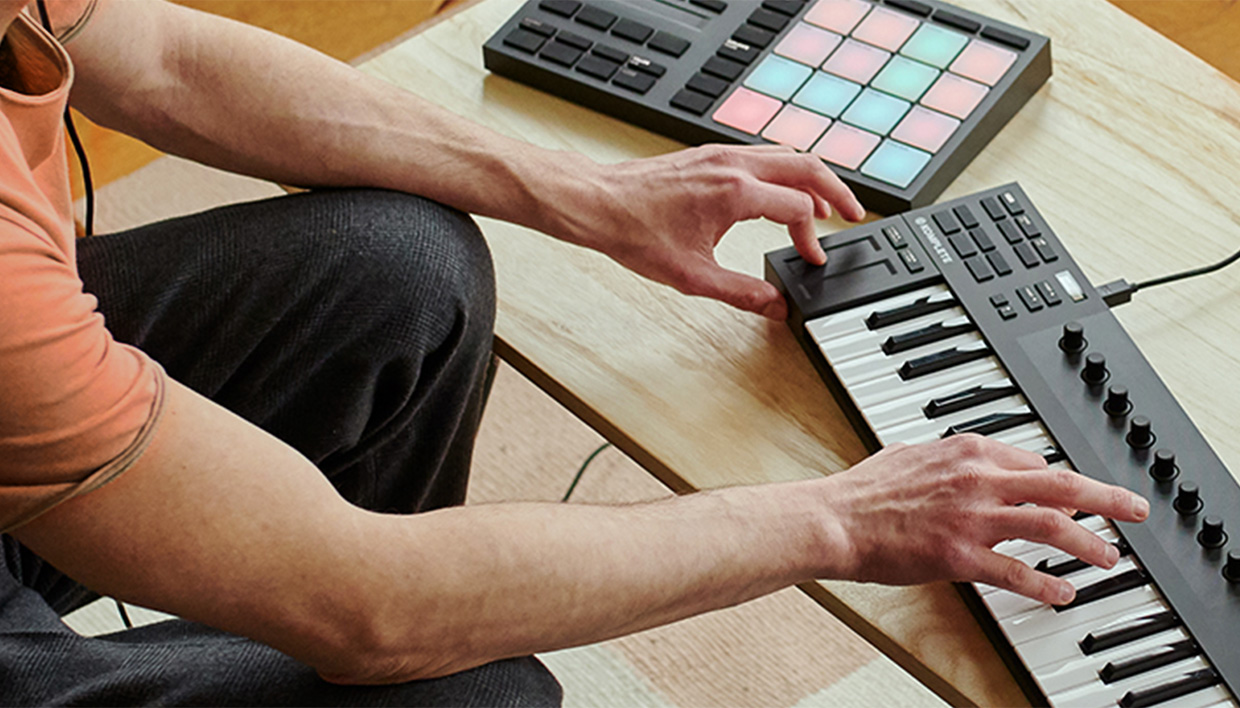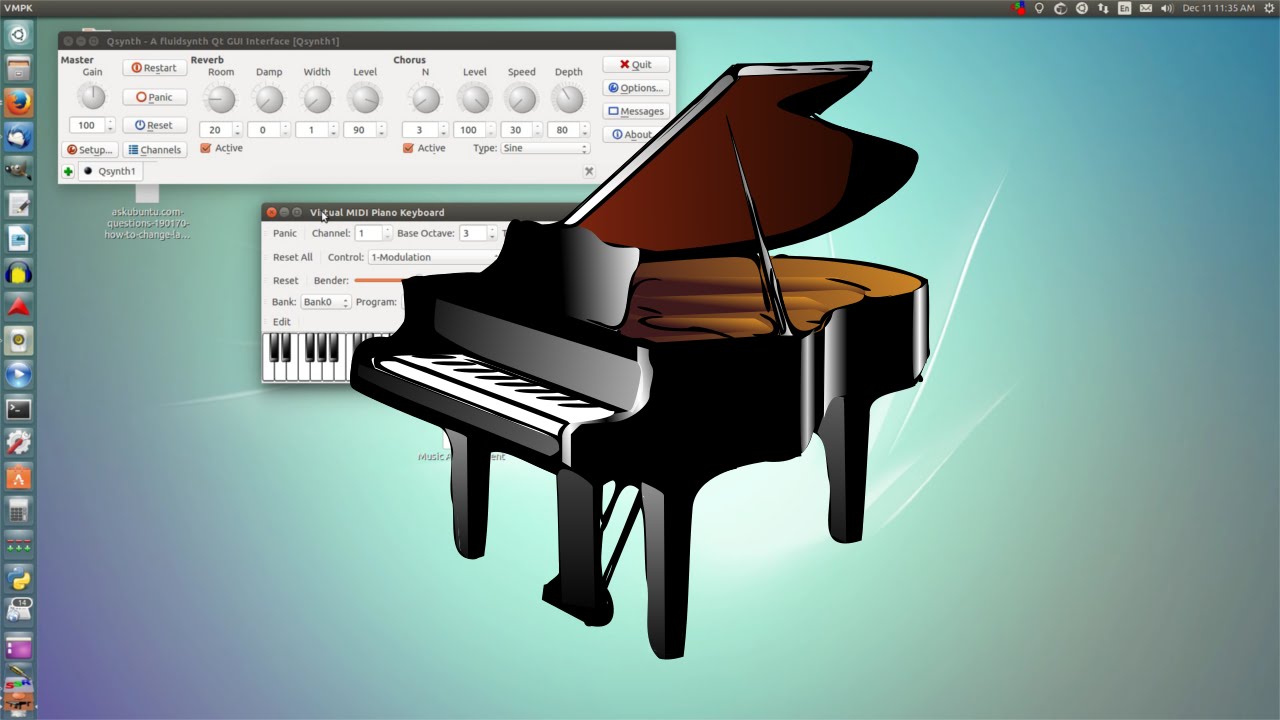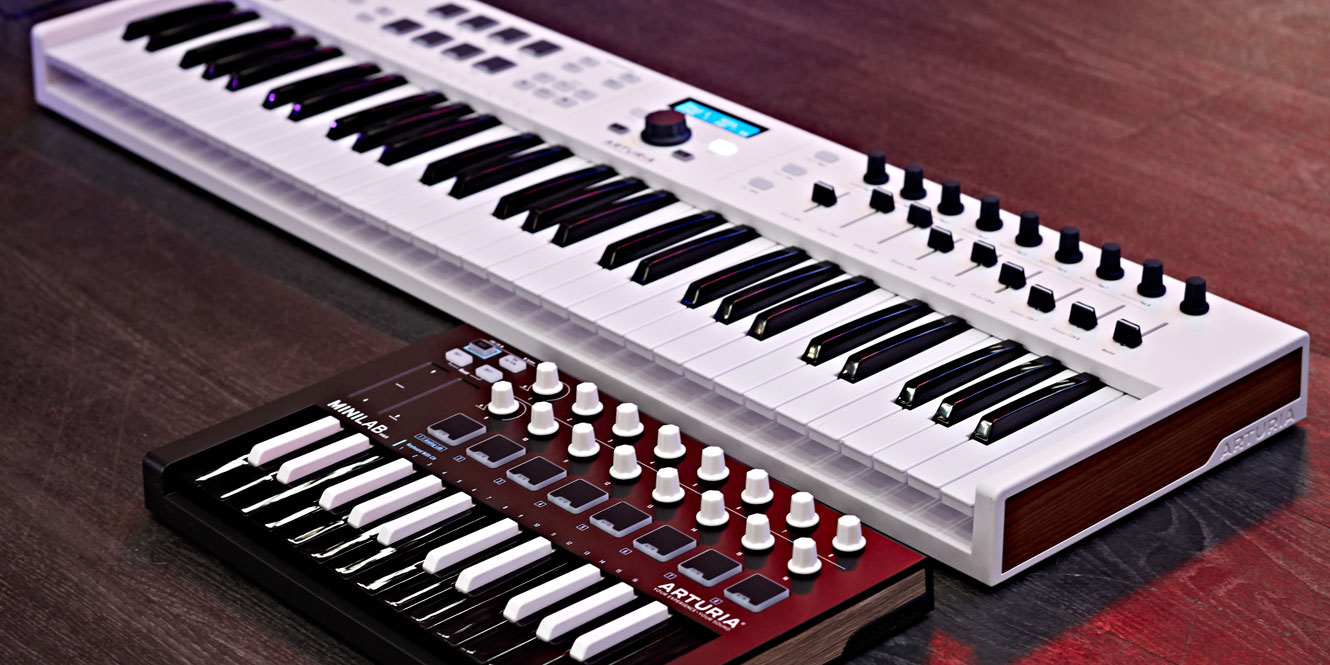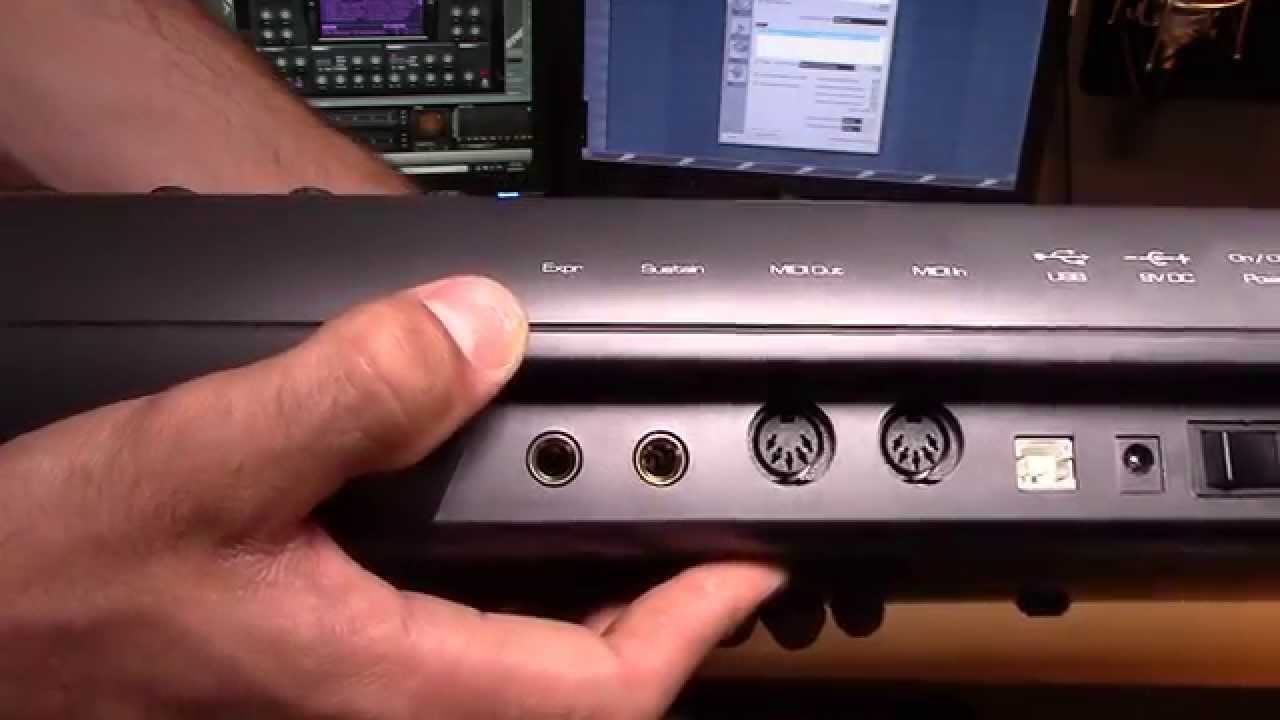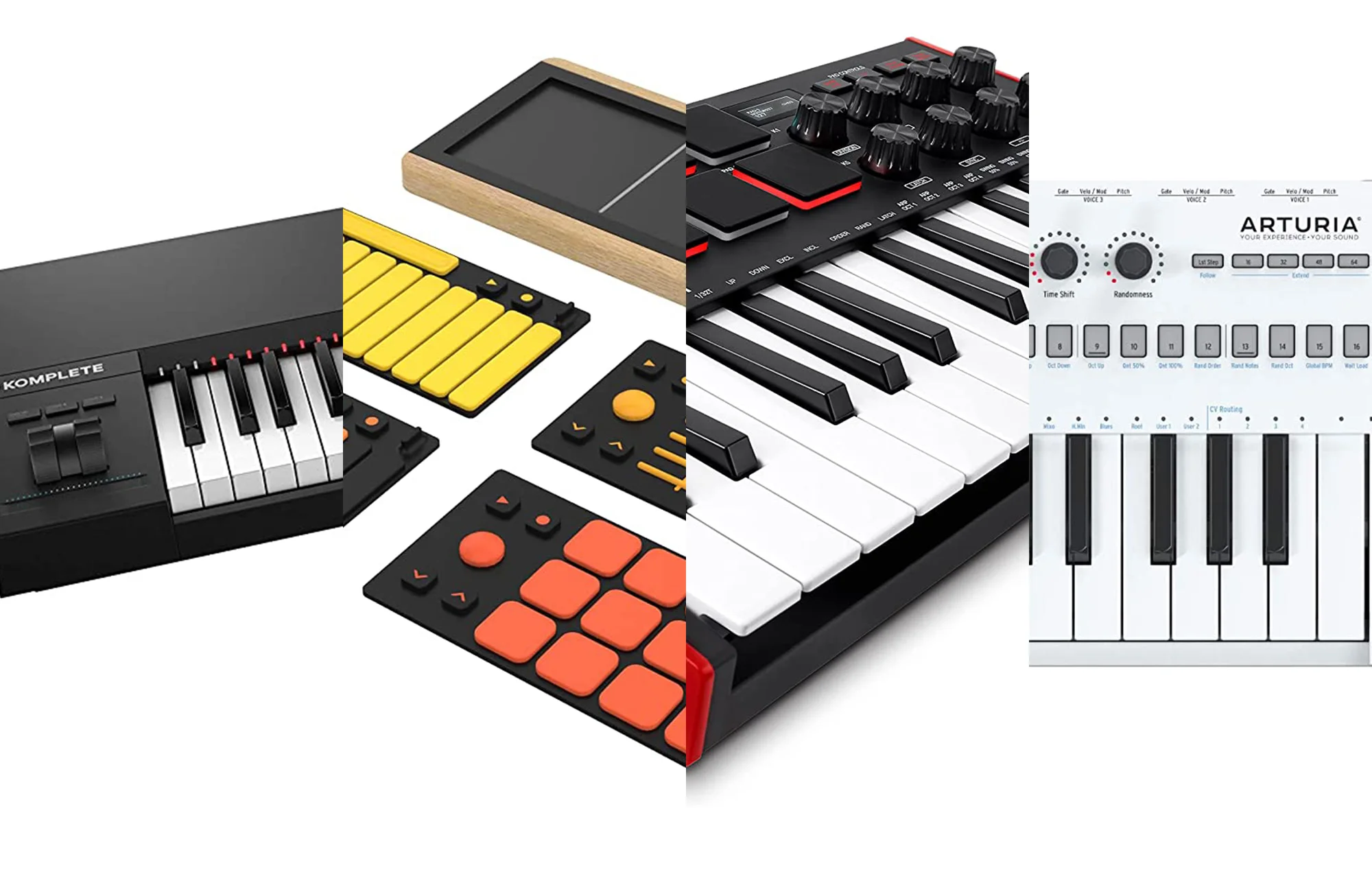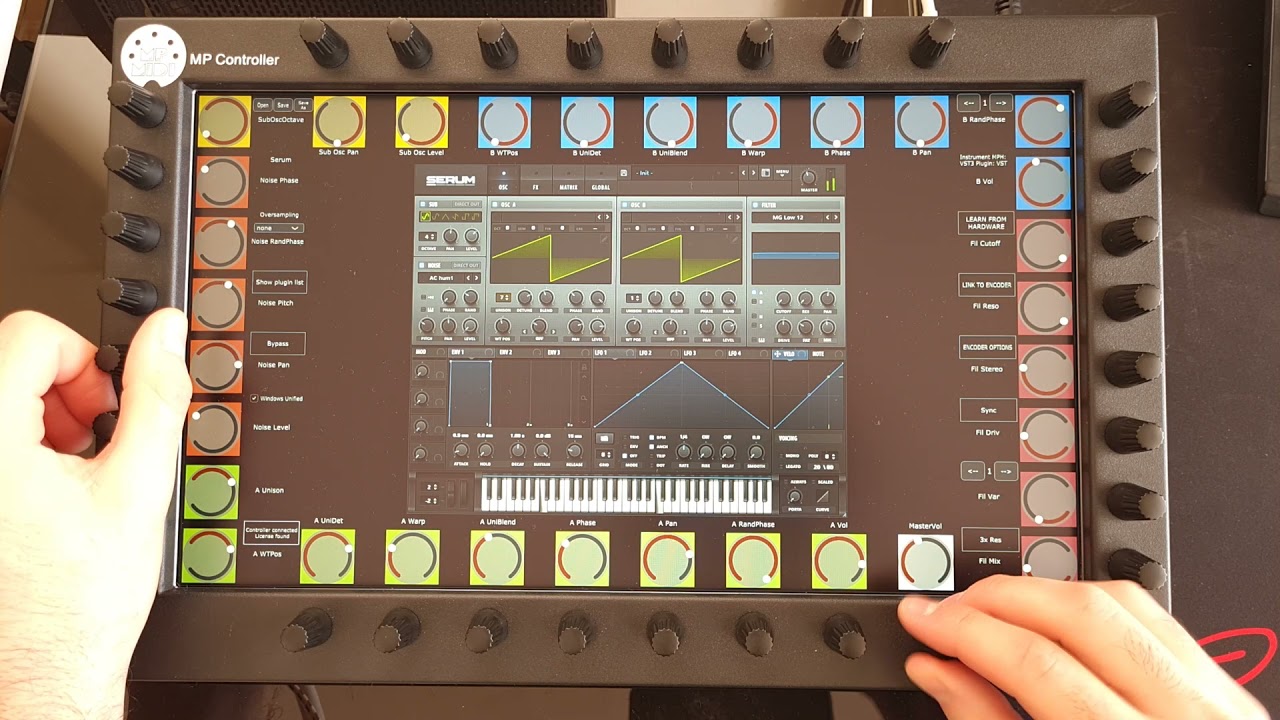Introduction
So, you've got a MIDI keyboard and you're eager to explore the world of digital music creation. Whether you're a budding musician, a seasoned performer, or a curious enthusiast, playing sounds through your MIDI keyboard can open up a universe of sonic possibilities. But where do you begin? How do you harness the power of your MIDI keyboard to produce captivating sounds that resonate with your creative vision?
In this comprehensive guide, we'll delve into the intricacies of playing sounds through your MIDI keyboard. From understanding MIDI keyboards and sound modules to connecting your MIDI keyboard to a computer and selecting the perfect sounds, we'll walk you through each step with clarity and precision. By the end of this journey, you'll be well-equipped to unleash your musical prowess and infuse your compositions with an array of captivating tones and textures.
Buckle up, as we embark on an exhilarating expedition into the realm of MIDI keyboards and sound manipulation. Get ready to unlock the full potential of your musical instrument and embark on a sonic adventure that knows no bounds. Whether you're aiming to craft ethereal melodies, lay down infectious grooves, or experiment with avant-garde soundscapes, this guide will serve as your compass, guiding you through the enthralling landscape of MIDI keyboard sound manipulation.
So, without further ado, let's dive into the captivating world of MIDI keyboards and unravel the secrets to playing sounds that will captivate and inspire.
Understanding MIDI Keyboards and Sound Modules
Before delving into the intricacies of playing sounds through your MIDI keyboard, it’s essential to grasp the fundamental components that facilitate this creative process. A MIDI (Musical Instrument Digital Interface) keyboard serves as a versatile tool for musicians, allowing for the seamless integration of digital sound manipulation into their artistic endeavors. Unlike traditional keyboards, MIDI keyboards do not produce sound on their own; instead, they rely on external devices, such as sound modules or computer software, to generate audio.
When it comes to MIDI keyboards, they come in various forms, including compact 25-key controllers, expansive 88-key weighted keyboards, and everything in between. These keyboards feature velocity-sensitive keys, enabling musicians to impart dynamics and expression into their performances. Additionally, many MIDI keyboards offer a plethora of assignable knobs, faders, and pads, empowering users to modulate and manipulate sound parameters in real-time.
On the other hand, sound modules play a pivotal role in the sonic ecosystem of MIDI keyboards. These compact devices house an extensive array of high-quality sounds, ranging from lush pianos and expressive strings to cutting-edge synthesizer tones and percussive elements. By connecting a MIDI keyboard to a sound module, musicians can tap into a vast sonic palette, expanding their creative horizons and sculpting captivating musical compositions with unparalleled flexibility.
Furthermore, the integration of MIDI keyboards and sound modules empowers musicians to explore diverse genres and styles, transcending the limitations of traditional acoustic instruments. Whether you’re crafting cinematic soundscapes, producing electronic dance music, or arranging orchestral compositions, the symbiotic relationship between MIDI keyboards and sound modules offers an immersive sonic playground for musical exploration.
As we continue our journey, we’ll delve deeper into the seamless integration of MIDI keyboards and sound modules, unraveling the intricacies of connecting, configuring, and harnessing the full potential of these transformative musical tools.
Connecting Your MIDI Keyboard to a Computer
Connecting your MIDI keyboard to a computer is a pivotal step in harnessing the full potential of your musical instrument. By establishing this connection, you pave the way for seamless communication between your MIDI keyboard and digital audio workstation (DAW) software, enabling you to harness a myriad of sounds and unleash your creative prowess.
Most modern MIDI keyboards feature USB connectivity, allowing for straightforward integration with computers. Simply connect the USB cable from your MIDI keyboard to an available USB port on your computer, and you’re one step closer to embarking on a sonic journey that knows no bounds. Once connected, your MIDI keyboard will be recognized by your computer as a MIDI input device, laying the groundwork for immersive music production and performance.
For MIDI keyboards that lack USB connectivity, MIDI-to-USB interfaces serve as invaluable conduits for establishing a seamless connection with your computer. These compact interfaces bridge the gap between traditional MIDI connectors and modern USB ports, ensuring that your MIDI keyboard can interface with contemporary computer systems without any compatibility hiccups.
Upon establishing the physical connection, it’s essential to configure your computer to recognize and communicate with your MIDI keyboard. This involves installing the necessary drivers, which are often provided by the manufacturer and can be downloaded from their official website. Once the drivers are installed, your computer will be primed to receive MIDI data from your keyboard, setting the stage for a harmonious synergy between hardware and software.
As we venture further, we’ll explore the pivotal role of digital audio workstation (DAW) software in harnessing the creative potential of your MIDI keyboard. By seamlessly integrating your MIDI keyboard with your DAW, you’ll unlock a treasure trove of sonic possibilities, enabling you to compose, arrange, and perform with unparalleled freedom and flexibility.
Setting Up Your DAW Software
Once your MIDI keyboard is connected to your computer, the next crucial step is to set up your digital audio workstation (DAW) software. DAWs serve as the central hub for music production, offering a comprehensive suite of tools for recording, editing, arranging, and mixing audio. Whether you’re a seasoned producer or a novice enthusiast, navigating the landscape of DAW software is integral to harnessing the full potential of your MIDI keyboard.
First and foremost, it’s essential to select a DAW that aligns with your creative workflow and musical aspirations. Popular DAWs such as Ableton Live, Logic Pro, FL Studio, and Pro Tools offer diverse feature sets and intuitive interfaces, catering to a wide spectrum of musical genres and production styles. Once you’ve chosen your preferred DAW, install the software on your computer and ensure that it’s compatible with your operating system.
Upon launching your DAW, configure the MIDI settings to establish seamless communication with your MIDI keyboard. This involves designating your MIDI keyboard as the input device within the DAW’s preferences or settings menu. By doing so, your MIDI keyboard becomes the conduit through which you’ll input musical data into the DAW, enabling you to trigger sounds, record performances, and manipulate parameters with precision.
Furthermore, many DAWs offer the flexibility to create custom MIDI mappings, allowing you to assign specific functions and parameters on your MIDI keyboard to various controls within the software. This level of customization empowers you to tailor the behavior of your MIDI keyboard to suit your unique creative workflow, fostering an environment where musical ideas can flow freely and effortlessly.
As you familiarize yourself with your chosen DAW, explore its array of virtual instruments, effects, and sound libraries. Many DAWs come bundled with an extensive selection of sounds, ranging from classic synthesizers and sampled instruments to cutting-edge electronic textures and percussion kits. Familiarize yourself with these sonic resources, as they will serve as the building blocks for your musical explorations.
With your DAW software primed and your MIDI keyboard poised for action, you’re on the cusp of a transformative musical journey. The seamless integration of these two elements lays the foundation for boundless creativity and sonic innovation, empowering you to craft immersive compositions that resonate with depth and emotion.
Choosing and Loading Sounds
With your MIDI keyboard and DAW software in sync, the next step is to embark on the exhilarating process of choosing and loading sounds that will breathe life into your musical creations. The sonic landscape at your disposal is vast and diverse, encompassing everything from traditional acoustic instruments to futuristic synthesizer tones and beyond. As you navigate this sonic realm, consider the genre, mood, and texture you aim to convey, as these factors will guide your selection of sounds.
Many DAWs come equipped with an extensive array of virtual instruments and sound libraries, offering a rich tapestry of sounds that cater to various musical genres and production styles. Whether you’re drawn to the warmth of a grand piano, the ethereal allure of atmospheric pads, or the pulsating energy of electronic drum kits, your DAW’s sound library is a treasure trove waiting to be explored.
When selecting sounds for your compositions, consider the expressive capabilities of your MIDI keyboard. Does it feature velocity-sensitive keys, modifiable parameters, or assignable controls? Understanding the nuances of your MIDI keyboard’s capabilities will inform your choice of sounds, allowing you to select instruments and textures that resonate with your performance style and musical vision.
Moreover, explore the world of third-party virtual instruments and sound libraries, which can augment your sonic palette with unique timbres and sonic textures. From boutique synthesizer emulations to meticulously sampled orchestral instruments, the realm of third-party sound libraries offers a wealth of options to enrich your musical productions and performances.
Once you’ve chosen your desired sounds, it’s time to load them into your DAW. This process typically involves selecting a virtual instrument or sound patch within your DAW’s interface and assigning it to a MIDI track. By doing so, you establish a direct link between your MIDI keyboard and the selected sound, enabling you to trigger and manipulate it in real-time.
As you load sounds into your DAW, take the opportunity to experiment with layering and blending different instruments and textures. By combining diverse sounds, you can craft rich, multi-dimensional arrangements that captivate listeners and evoke a myriad of emotions. Embrace the freedom to sculpt sonic landscapes that reflect your artistic identity and creative aspirations.
With your chosen sounds at your fingertips, you’re poised to unleash a symphony of sonic expression, breathing life into your musical compositions with an array of captivating tones and textures.
Playing Sounds through Your MIDI Keyboard
With your MIDI keyboard connected, your DAW set up, and your sounds loaded, the stage is set for you to unleash your creativity and begin playing sounds that resonate with your artistic vision. Whether you’re a pianist seeking to evoke the emotive resonance of a grand piano, a synth enthusiast sculpting otherworldly textures, or a drummer crafting infectious rhythms, your MIDI keyboard serves as the conduit through which you’ll breathe life into your musical ideas.
As you engage with your MIDI keyboard, the velocity-sensitive keys offer a dynamic range of expression, allowing you to imbue your performances with nuanced articulation and emotive depth. Whether you’re delicately caressing the keys to evoke a tender melody or unleashing thunderous chords with fervent intensity, the responsive nature of your MIDI keyboard empowers you to convey a spectrum of emotions through your playing.
Furthermore, many MIDI keyboards feature assignable controls such as knobs, faders, and pads, which can be mapped to various parameters within your DAW. This level of customization enables you to modulate sound characteristics, apply effects, and shape sonic textures in real-time, fostering a deeply interactive and immersive performance experience.
As you navigate the sonic terrain, consider the role of performance techniques in shaping your musical expressions. From pitch bends and modulations to expressive vibrato and rhythmic embellishments, your MIDI keyboard affords a myriad of performance nuances that elevate your playing to new heights. Embrace these techniques as tools for infusing your performances with personality and flair, transcending the boundaries of static sound playback and breathing life into your musical narratives.
Moreover, the integration of your MIDI keyboard with your DAW opens the door to real-time recording and looping, enabling you to capture spontaneous musical ideas and craft intricate arrangements on the fly. Whether you’re layering melodies, building rhythmic patterns, or sculpting evolving soundscapes, the seamless synergy between your MIDI keyboard and DAW empowers you to shape compositions with fluidity and immediacy.
As you immerse yourself in the act of playing sounds through your MIDI keyboard, embrace experimentation and spontaneity. Allow your musical intuition to guide your hands as you traverse the keys, exploring uncharted sonic territories and channeling your emotions into captivating performances. With each note, chord, and passage, you’re sculpting a sonic tapestry that reflects your artistic identity and resonates with the essence of your creative spirit.
Conclusion
Congratulations on embarking on this exhilarating journey into the realm of MIDI keyboards and sound manipulation. Throughout this guide, we’ve navigated the intricacies of connecting your MIDI keyboard to a computer, setting up your DAW software, choosing and loading sounds, and playing those sounds with expressive finesse. As you venture forth on your musical odyssey, remember that the fusion of technology and creativity is a boundless realm where innovation knows no bounds.
By understanding the symbiotic relationship between MIDI keyboards and sound modules, you’ve unlocked the potential to sculpt captivating sonic landscapes that transcend the confines of traditional instrumentation. The seamless integration of your MIDI keyboard with your DAW has furnished you with a canvas on which to paint vivid musical narratives, harnessing a diverse array of sounds and textures to articulate your artistic vision.
As you continue to explore the myriad possibilities that unfold before you, remember that your MIDI keyboard is not merely a tool, but an extension of your musical expression. The velocity-sensitive keys, assignable controls, and performance techniques at your disposal serve as conduits for channeling your emotions, infusing your compositions with depth, and captivating audiences with evocative performances.
In this digital age of music production, the boundaries of creativity are ever-expanding, beckoning you to push the envelope and redefine what is possible. Embrace the spontaneity of real-time recording, the intricacies of sound design, and the boundless freedom to craft compositions that resonate with authenticity and innovation.
As you navigate this sonic frontier, remember that the most profound compositions emanate from the depths of your creativity. Whether you’re crafting lush symphonic arrangements, pulsating electronic anthems, or introspective ambient soundscapes, your MIDI keyboard is the conduit through which your musical visions come to life.
So, as you embark on this transformative musical journey, let your passion guide you, your creativity inspire you, and your MIDI keyboard be the vessel through which your sonic aspirations take flight. Embrace the joy of discovery, the thrill of experimentation, and the power of musical expression. The world of MIDI keyboards and sound manipulation is yours to explore, to innovate, and to make your own.







